Exfoliating 101: Everything you need to know to exfoliate safely
Select independently determines what we cover and recommend. When you buy through our links, we may earn a commission. Learn more.
Looking through the skin care aisle of your local retailer, you might see cleansers, body washes and face masks labeled as “exfoliating.” But what exactly does the term mean, and what does a proper exfoliating routine do for your skin?
Exfoliating is the process of removing the dead skin cells from the outermost surface layer of your skin, according to Dr. Shereen Idriss, a board-certified dermatologist in New York City. It can have a number of benefits, like leaving your skin looking even, smooth and soft, our experts say. A consistent exfoliating routine also cleans out oil and debris from your pores to prevent acne breakouts and stimulates cell turnover, which helps reduce the appearance of fine lines and wrinkles, says Idriss.
We spoke to board-certified dermatologists about how to shop for exfoliating products based on your skin type and how to craft a proper routine for both your face and body. We also compiled expert-recommended and Select staff-favorite exfoliants to consider.
SKIP AHEAD The best exfoliating products | What is the difference between chemical and physical exfoliants? | How to best exfoliate the face and body | Who should exfoliate? | How often should you exfoliate your face? | How often should you exfoliate your body? | Can you pair an exfoliant with other skin care ingredients? | Is it possible to over-exfoliate?
Our top picks
Best peel: Dr. Dennis Gross Skincare Alpha Beta Universal Daily Peel Pads
Best toner: Paula’s Choice 2% BHA Liquid Exfoliant
Best cleanser: Neutrogena Hydro Boost Exfoliating Cleanser
Best serum: Sunday Riley Good Genes Lactic Acid Treatment
Best body wash: Naturium The Smoother Glycolic Acid Exfoliating Body Wash
Best scrub: Nécessaire The Body Exfoliator
How we picked the best exfoliating products
There are two types of exfoliants: physical and chemical. Physical exfoliants use abrasive particles or textured materials to scrub the surface of your skin, while chemical exfoliants rely on acids to dissolve dead skin, debris and more. Dermatologists prefer chemical exfoliants because they tend to be less harsh on the skin (more on that below). Our experts recommend using chemical exfoliants with the following ingredients:
Alpha-hydroxy acids: Commonly known as AHAs, these acids are water-soluble chemical compounds that help remove dead skin cells, says Idriss. These acids help exfoliate the top layer of the skin. Some common AHAs are glycolic, lactic and mandelic acid.
Beta-hydroxy acids: These acids, known as BHAs, are organic oil-soluble compounds that exfoliate the skin, replace old skin cells, remove excess oil and have anti-inflammatory properties, according to experts. The most common BHA found in skin care products is salicylic acid.
Poly-hydroxy acids: Similar to AHAs, PHAs are chemical exfoliants that help remove dead skin cells by unclogging pores. They are hydrating and larger in molecular size compared to AHAs or BHAs, so they work on the surface of the skin and don’t penetrate pores as deeply as other acids do. This makes them more gentle and suitable for sensitive skin since they cause less irritation, according to our experts. Common PHAs in skin care products include gluconolactone, lactobionic and maltobionic acid.
The best exfoliating products in 2023
Below are dermatologist-recommended and Select staff-favorite products that contain exfoliating ingredients like AHAs and BHAs and are in line with our experts’ guidance. Although some of these products may be safe for daily use, our experts recommend exfoliating one to three times a week.
Dr. Dennis Gross Skincare Alpha Beta Universal Daily Peel Pads
This peel has ingredients like lactic and malic acid to even out skin tone, glycolic acid to reduce the appearance of fine lines and salicylic acid to exfoliate, reduce buildup of excess oil and combat acne, according to the brand. “Unlike other exfoliating peels, which you should limit using to two to three times per week depending on your skin, you can use this two-step chemical peel daily because this peel does not have mandelic (AHA) or Salix Alba (BHA) acids,” says Dr. Stephen Suah, a board-certified dermatologist at Foxhall Dermatology in Washington, D.C. “It is much gentler for people with mild acne/combination skin.”
These daily peels are also available in two other versions, including an ultra gentle version (which Suah recommends for those with dry or sensitive skin) and an extra strength version.
Dr. Dennis Gross Alpha Beta Universal Daily Peel Pads
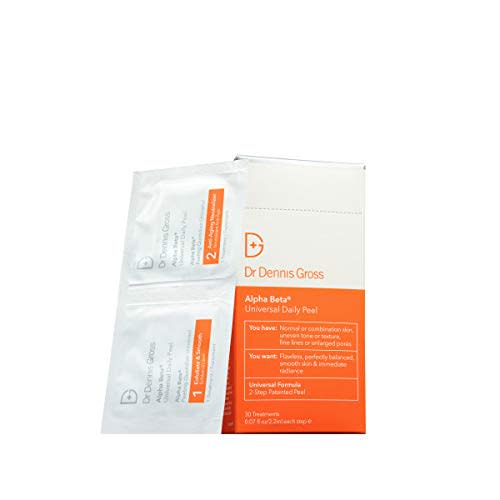
Dr. Dennis Gross Alpha Beta Universal Daily Peel Pads $ at Amazon
Dr. Dennis Gross Alpha Beta Universal Daily Peel Pads $ at Sephora
Dr. Dennis Gross Alpha Beta Universal Daily Peel Pads $ at Dr. Dennis Gross
Paula’s Choice 2% BHA Liquid Exfoliant
This liquid exfoliant has 2% salicylic acid, the standard percentage of the BHA in most skin care products, according to our experts. The exfoliant, which comes recommended by Suah, is suitable for all skin types and helps unclog pores and smooth fine lines, according to the brand. Using either your fingertips or a lightly soaked cotton pad, apply the liquid to your face and neck and leave it on without rinsing, according to Paula’s Choice.
Paula’s Choice 2% BHA Liquid Exfoliant
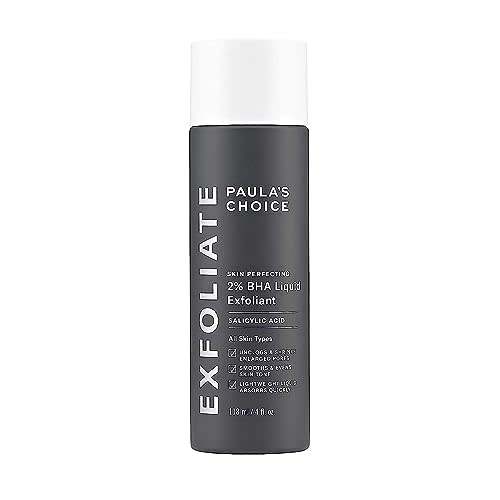
Paula’s Choice 2% BHA Liquid Exfoliant $ at Amazon
Paula’s Choice 2% BHA Liquid Exfoliant $ at Sephora
Paula’s Choice 2% BHA Liquid Exfoliant $ at Dermstore
Glow Recipe Watermelon Glow PHA + BHA Pore-Tight Toner
Formulated with a combination of PHAs and BHAs, this toner is a great option for beginners who are just starting out with chemical exfoliants because it’s gentle on the skin, says Dr. Liza Moore, a board-certified dermatologist in Tysons, Virginia. With PHAs like gluconolactone it helps give the skin more time to react to its exfoliating benefits because of how big they are on a molecular level, making it sensitive skin friendly, according to the brand. Aside from the chemical exfoliants in the formula, it also has ingredients like hyaluronic acid to hydrate and retain moisture and tea tree extract to help reduce any irritation, according to Glow Recipe.
Glow Recipe Watermelon Glow PHA + BHA Pore-Tight Toner
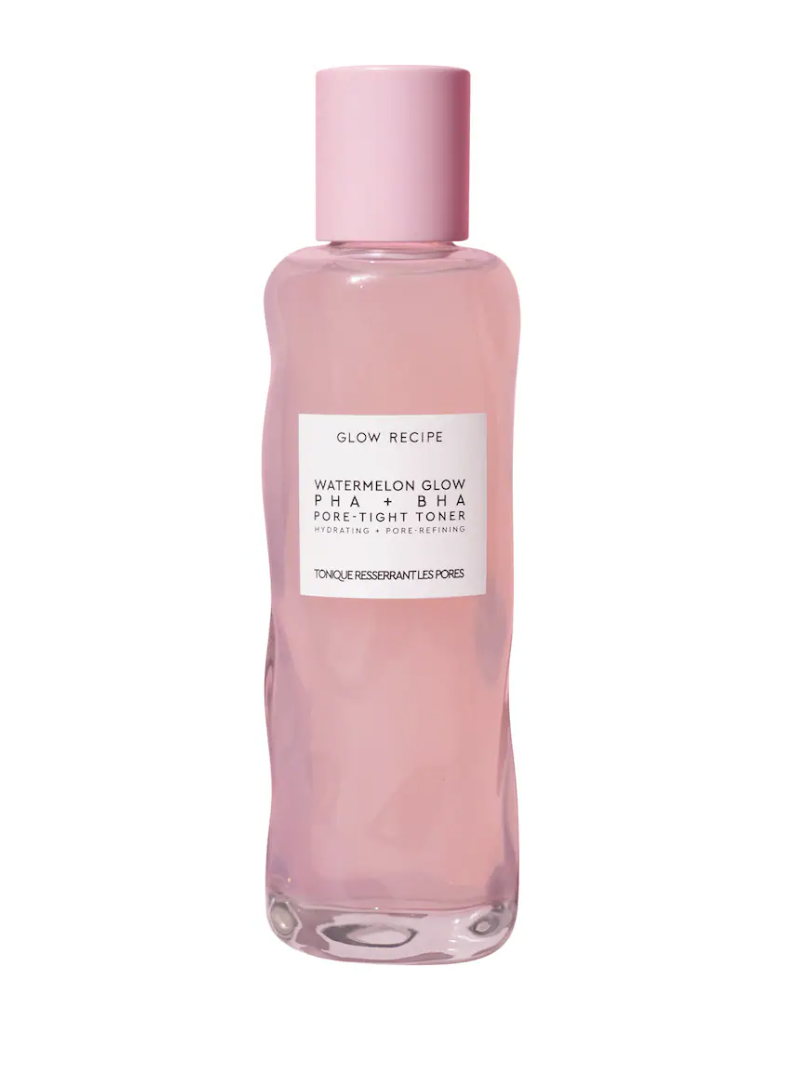
Glow Recipe Watermelon Glow PHA + BHA Pore-Tight Toner $ at Sephora
Glow Recipe Watermelon Glow PHA + BHA Pore-Tight Toner $ at Glow Recipe
Neutrogena Hydro Boost Exfoliating Cleanser
This cleanser helps gently exfoliate the skin while also combating dryness, a common side effect of using AHAs, according to Suah. The gel-cream cleanser uses glycolic and lactic acid as its exfoliating agents, as well as hyaluronic acid and glycerin to lock and seal in hydration, according to Neutrogena.
Neutrogena Hydro Boost Exfoliating Cleanser
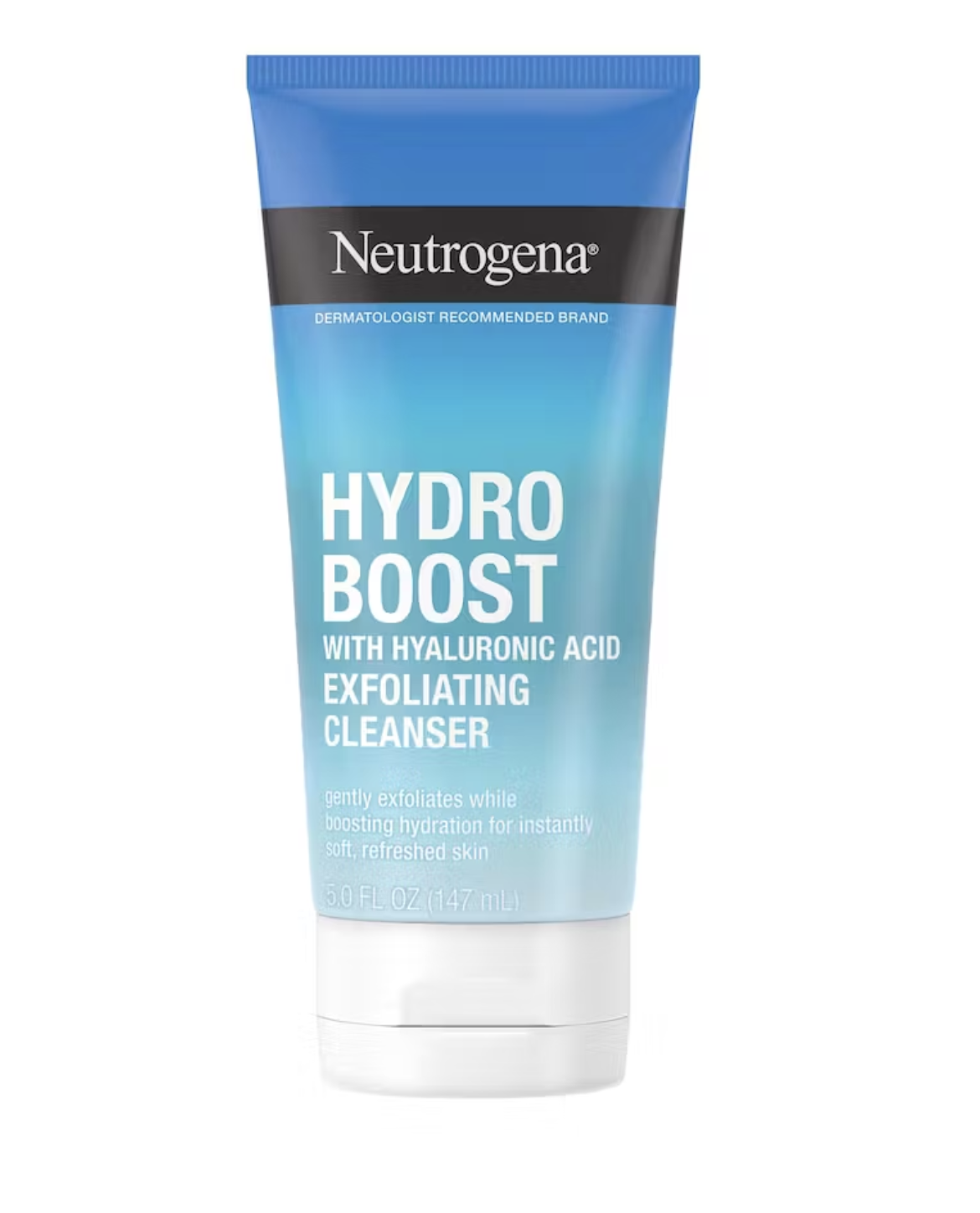
Neutrogena Hydro Boost Exfoliating Cleanser $ at Target
Neutrogena Hydro Boost Exfoliating Cleanser $ at Ulta
Neutrogena Hydro Boost Exfoliating Cleanser $ at Neutrogena
Skinceuticals Micro-Exfoliating Scrub
If you prefer a physical scrub, Suah recommends this micro-exfoliating option from Skinceuticals. This product uses silica (a naturally occurring mineral) to remove dead skin cells, debris and excess oil and help smooth and soften the skin, according to the brand. Apply a small amount of the scrub on wet skin and gently massage for a minute before rinsing, according to Skinceuticals.
SkinCeuticals Micro-Exfoliating Scrub
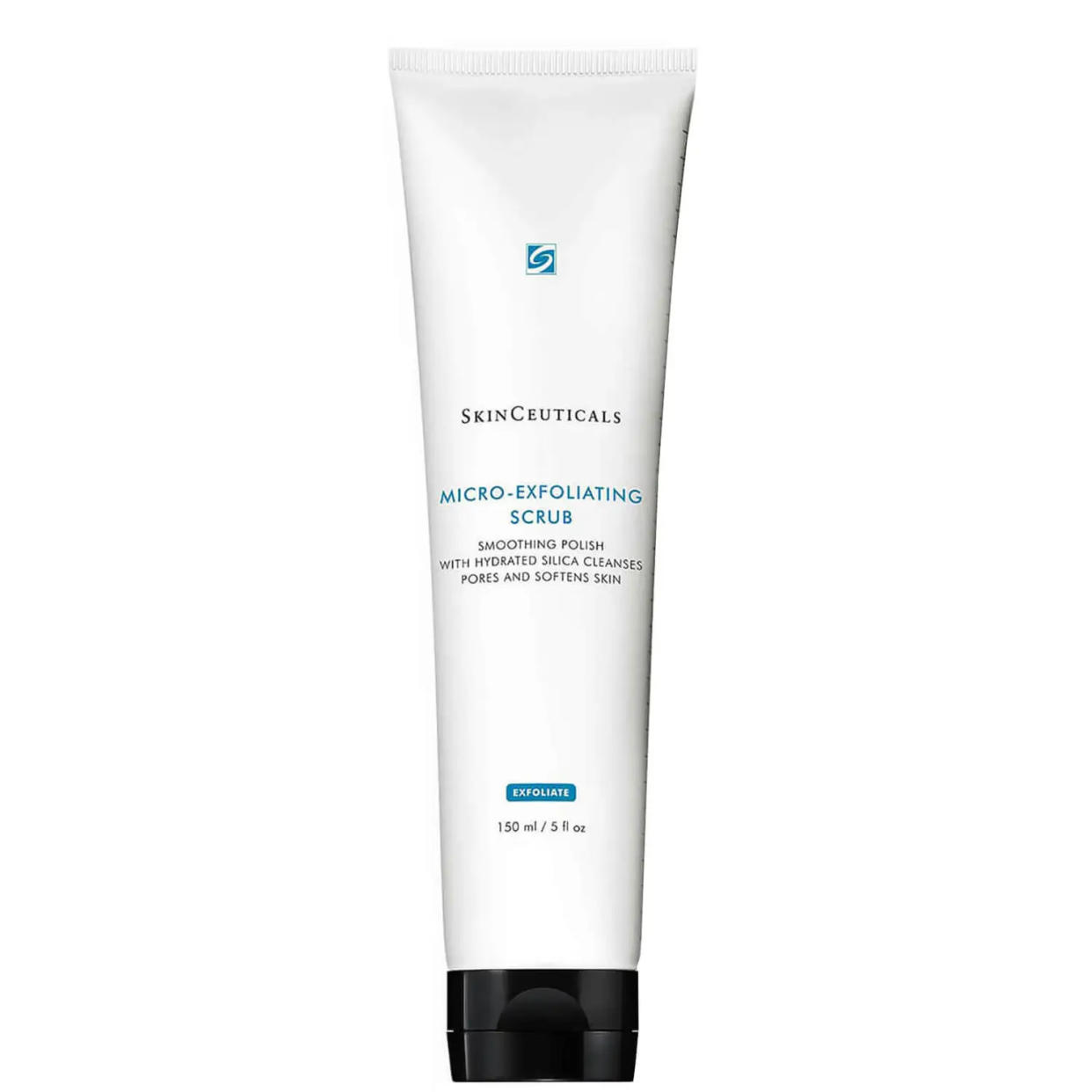
SkinCeuticals Micro-Exfoliating Scrub $ at Dermstore
SkinCeuticals Micro-Exfoliating Scrub $ at Lovely Skin
SkinCeuticals Micro-Exfoliating Scrub $ at SkinCeuticals
Sunday Riley Good Genes All-In-One Lactic Acid Treatment
This overnight serum from Sunday Riley is a favorite of Suah’s because it uses lactic acid to hydrate, exfoliate and help with discoloration, while ingredients like licorice and lemongrass even out your skin tone. To use it as a leave-on treatment, apply one to two pumps on clean, dry skin before going to bed. If you have sensitive skin, you should leave it on for 15 minutes before rinsing it off and patting your skin dry, according to the brand.
Sunday Riley Good Genes All-in-One Lactic Acid Treatment
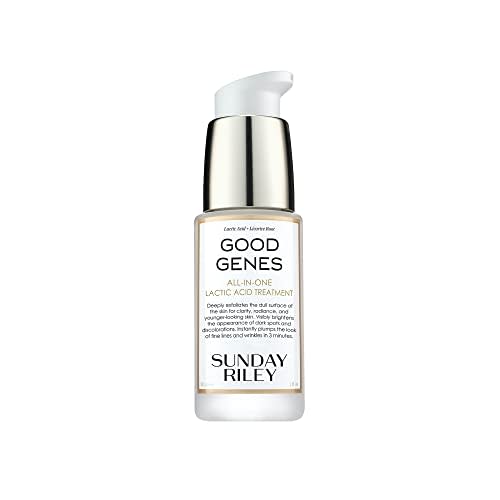
Sunday Riley Good Genes All-in-One Lactic Acid Treatment $ at Amazon
Sunday Riley Good Genes All-in-One Lactic Acid Treatment $ at Sephora
Sunday Riley Good Genes All-in-One Lactic Acid Treatment $ at Ulta
iS Clinical Active Serum
Although this serum is suitable for all skin types, it’s a great option for oily skin since the combination of acids helps control both oil and acne, says Moore. It has AHAs like sugarcane and bilberry to exfoliate, as well as white willow bark, a BHA that goes deep into the pores to remove any oil, debris and dead skin cells found inside, according to the brand. For the best results, apply three to four drops on your hand and dab the serum on your face using your fingertips, according to iS Clinical.
iS CLINICAL Active Serum
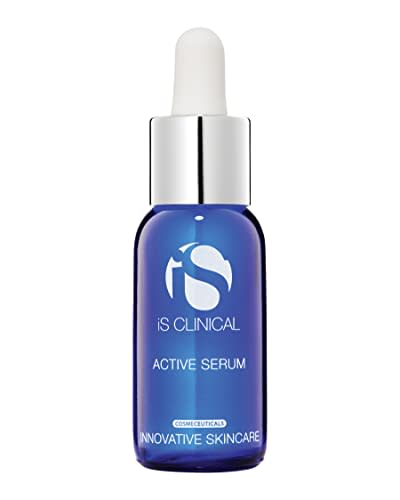
iS CLINICAL Active Serum $ at Amazon
iS CLINICAL Active Serum $ at Dermstore
iS CLINICAL Active Serum $ at Skinstore
Skinbetter Science AlphaRet Overnight Cream
This overnight cream is another favorite of Moore’s because it combines the brand’s lactic acid and retinol blend with glycolic acid to reduce the appearance of texture, fine lines and wrinkles. To combat any dryness from the retinol and AHAs, it also has hydrating ingredients like hyaluronic acid, ceramides and squalane, according to the brand. This formula is also available in different sizes, concentrations and consistencies, including a serum and a chemical peel version.
Skinbetter Science AlphaRet Overnight Cream
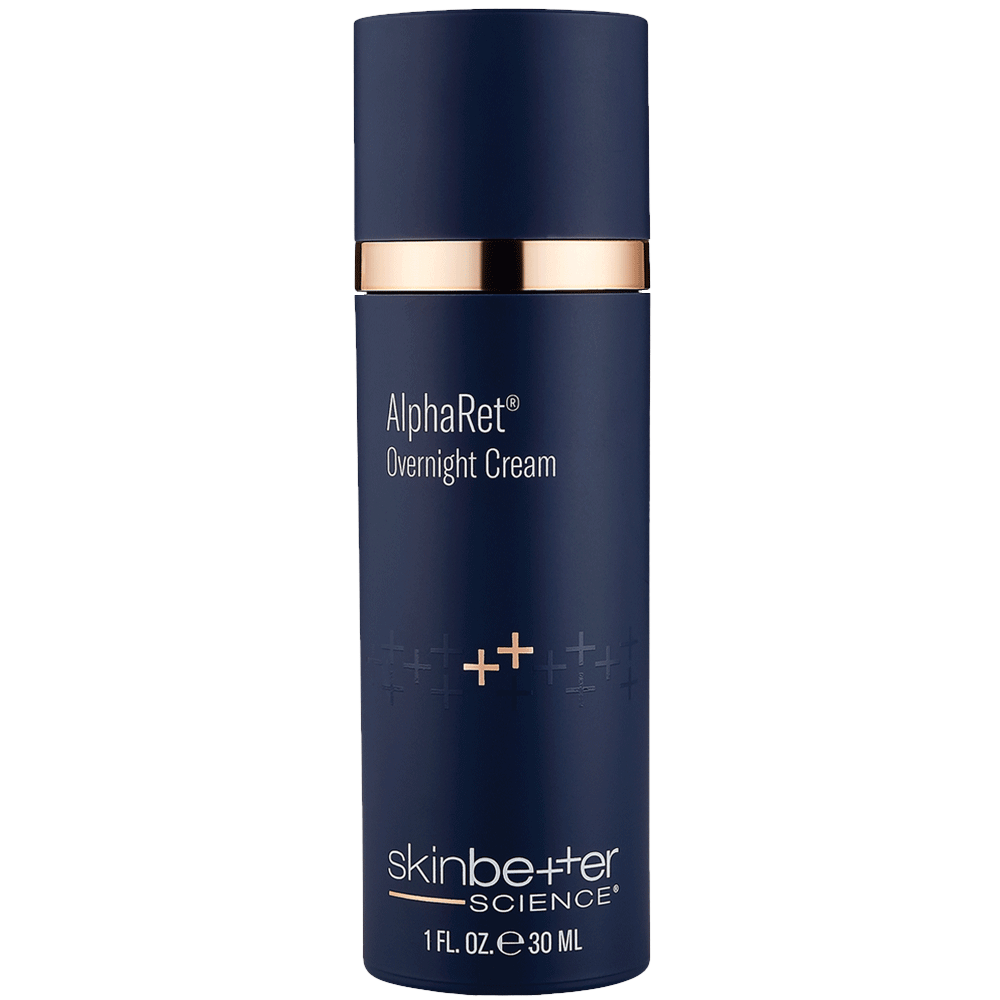
Skinbetter Science AlphaRet Overnight Cream $ at SkinBetter
Naturium The Smoother Glycolic Acid Exfoliating Body Wash
This fragrance-free body wash combines five AHAs, including glycolic, malic and lactic acid, to exfoliate and remove dead skin cells. I use this creamy wash three times a week and find that it’s gentle on my sensitive and eczema-prone skin. Apply as many pumps as you need to coat your entire body and gently massage it into your skin, according to the brand. On the days I have extra time, I always leave the wash on my skin for a few minutes before rinsing it off.
Naturium The Smoother Glycolic Acid Exfoliating Body Wash
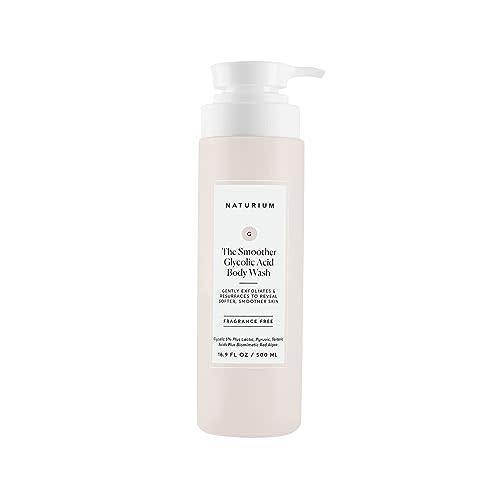
Naturium The Smoother Glycolic Acid Exfoliating Body Wash $ at Amazon
Naturium The Smoother Glycolic Acid Exfoliating Body Wash $ at Target
Naturium The Smoother Glycolic Acid Exfoliating Body Wash $ at Naturium
Billie Body Buffer
Billie’s Body Buffer bar, which is recommended by Select associate updates editor Zoe Malin, uses plastic-free jojoba beads to physically exfoliate the skin. These beads are safe to use on all skin types because they have a rounded shape and won’t damage the skin, according to Moore. Aside from exfoliating, this Body Buffer also helps prevent ingrown hairs and hydrates the skin with ingredients like shea butter and aloe vera, according to the brand.
Billie Body Buffer
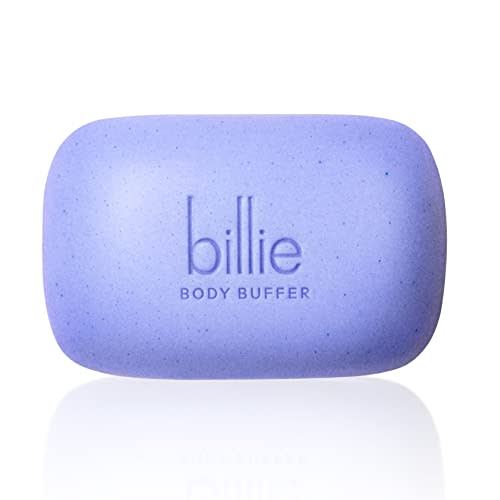
Nécessaire The Body Exfoliator
This physical exfoliant combines salicylic acid with AHAs like glycolic and lactic acid. “It doesn’t feel like it’s tearing out your skin like most coarse exfoliating products do,” says Select associate commerce editor Nishka Dhawan. The brand recommends using this product once a week and also offers it in a variety of essential oil blends to provide a subtle scent, including eucalyptus, bergamot and sandalwood.
Nécessaire The Body Exfoliator
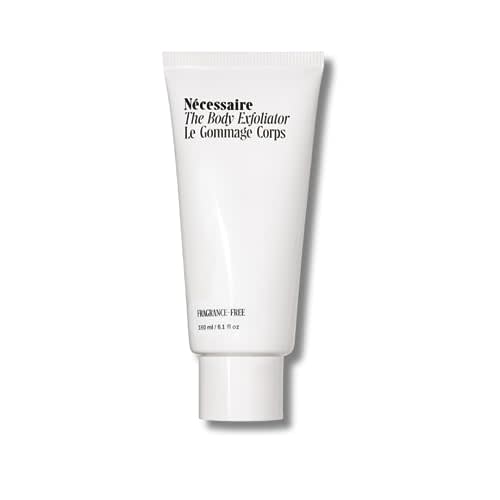
Nécessaire The Body Exfoliator $ at Amazon
Nécessaire The Body Exfoliator $ at Sephora
Nécessaire The Body Exfoliator $ at Nordstorm
First Aid Beauty KP Bump Eraser Body Scrub
This body scrub, which has a 4.4-star average rating from over 31,000 reviews on Amazon, is a great option for most skin types and concerns, including rough, bumpy skin caused by keratosis pilaris. The scrub combines both physical and chemical exfoliants into one product: The pumice buffing beads physically scrub away dead skin cells, while glycolic and lactic acids unclog pores. Apply the scrub on wet skin and massage gently once to twice a week, depending on your skin’s tolerance level, according to the brand.
First Aid Beauty KP Bump Eraser Body Scrub
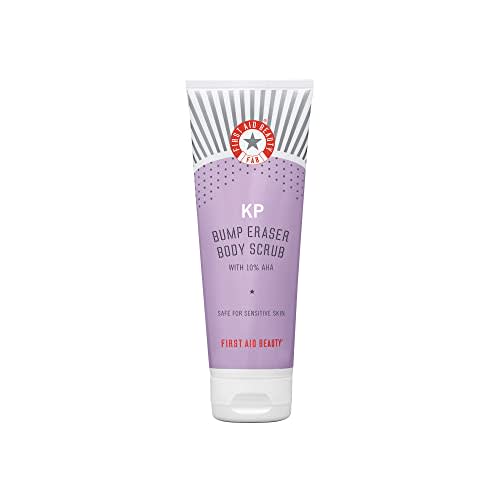
First Aid Beauty KP Bump Eraser Body Scrub $ at Amazon
First Aid Beauty KP Bump Eraser Body Scrub $ at Ulta
First Aid Beauty KP Bump Eraser Body Scrub $ at Sephora
Dove Exfoliating Body Polish
Select updates editor Mili Godio uses this exfoliating body scrub three times a week in the shower and loves how smooth her skin feels afterward. “I’ve had trouble finding a body scrub that doesn’t irritate my sensitive skin in the past, but this Dove one fits the bill,” she says. “I love how gentle it feels on my skin and the scent is pleasing yet subtle.” Not only does this polish remove dead skin with the help of crushed macadamia, but it’s also hydrating since it’s formulated with the brand’s moisturizing cream, according to the brand. Massage the scrub in circular motions for a creamy lather and rinse, according to Dove.
Dove Exfoliating Body Polish

Dove Exfoliating Body Polish $ at Amazon
Dove Exfoliating Body Polish $ at Target
Dove Exfoliating Body Polish $ at Walmart
Paula’s Choice Weightless Body Treatment 2% BHA
This fragrance-free body lotion comes recommended by Select associate reporter Ashley Morris because the leave-on treatment uses salicylic acid to unclog pores and helps even out any texture. It also has vitamin E to hydrate the skin and protect it from free radicals, as well as chamomile and green tea to help calm irritation, according to the brand.
Paula's Choice Weightless Body Treatment 2% BHA
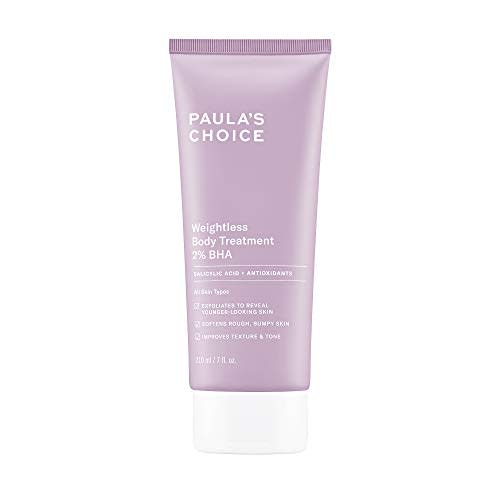
Paula's Choice Weightless Body Treatment 2% BHA $ at Amazon
Paula's Choice Weightless Body Treatment 2% BHA $ at Sephora
Paula's Choice Weightless Body Treatment 2% BHA $ at Dermstore
What’s the difference between chemical and physical exfoliants?
When shopping for exfoliating products, you may come across two main types: physical and chemical exfoliants. Physical exfoliants use sugars or beads to scrub away dead skin cells. This type of exfoliant can come in the form of scrubs or tools like brushes and exfoliating gloves, according to experts. Chemical exfoliants, on the other hand, use compounds like alpha-hydroxy acids, beta-hydroxy acids, poly-hydroxy acids and enzymes that penetrate the skin to dissolve or loosen the bonds between dead skin cells, says Idriss. These ingredients are found in skin care products like toners, serums and cleansers and moisturizers.
Most dermatologists agree that using chemical exfoliants is the safest way to shed dead skin cells from your face because they can penetrate the skin more deeply than physical exfoliants and are not as harsh on your skin, says Idriss.
Dermatologists don’t generally recommend a physical scrub for your face because, in most instances, you’re more likely to break down your skin barrier due to over-scrubbing. However, if you do choose to use a physical exfoliant for your face, look for round beads instead of triangular shaped ones, which might widen your pores. A benefit of exfoliating is minimizing the appearance of pores since you’re unclogging them, so widening them has the opposite effect, according to Moore. If you prefer to use a physical exfoliating tool like cleansing brushes, you should clean them nightly. You can use soap and water or UV light sanitation boxes that can disinfect skin care tools and prevent bacteria growth, according to our experts.
Although dermatologists recommend avoiding physical exfoliants on the face, they do agree it’s safe to use on the body because the skin is thicker. Dry brushing, loofahs, exfoliating gloves and coarse washcloths can be great options for the body because they remove layers of dead skin cells, according to our experts.
How to best exfoliate the face and body
Below, we list our experts’ tips to help you properly exfoliate both your face and body. Before incorporating an exfoliant in your skin care routine, consult your dermatologist to determine if it’s a good fit and how often to exfoliate for your specific skin type.
Face: Begin your skin care routine using a gentle cleanser that doesn’t have any active ingredients to avoid possible irritation, says Suah. Immediately after exfoliating with either a chemical or physical exfoliant, you want to repair the skin barrier with moisturizing ingredients like ceramides and hyaluronic acid because it prevents the skin from drying. You can find these hydrating ingredients in skin care products like serums and moisturizers, according to Suah.
Body: Similar to the face, you want to begin by cleansing the skin first with gentle body wash. Next, apply your exfoliating product in the shower. Within three minutes of exiting the shower, you should apply a body lotion or barrier repair cream since exfoliating can draw out moisture leaving your skin dry, according to Suah. You want to make sure your skin is slightly damp when applying your cream or lotion to help add and lock in moisture, says Suah.
Who should exfoliate?
All skin types can benefit from exfoliation. “It’s all about finding the right exfoliating product for your biggest skin concerns like acne, hyperpigmentation, fine lines and wrinkles,” says Idriss. To really make sure you are using the right ingredients for your skin type and skin concerns, consult your dermatologist first.
Normal/combination skin: You may benefit from using your standard AHAs or BHAs like glycolic acid or salicylic acid.
Oily or acne-prone skin: Look for products with salicylic acid, a type of BHA, because the ingredient is oil-soluble, helps unclog pores and removes excess oil, says Idriss.
Sensitive skin: Consider PHAs like lactobionic acid or maltobionic acid because they are gentler and less irritating on the skin, according to our experts.
Dry skin: This skin type should use glycolic acid and lactic acid as exfoliants because, in low concentrations, these acids are not drying and can help loosen and remove any dry or dead skin on the top of the skin, says Moore.
How often should you exfoliate your face?
Generally, the rule of thumb is to exfoliate somewhere between one to three times per week, says Suah. Exfoliating more often can strip your skin of its natural moisture and oils, which can irritate and damage your skin barrier over time. However, the frequency typically depends on your skin type.
If you have sensitive skin or a skin condition like rosacea or eczema, you should only aim to exfoliate once or twice a week to avoid irritation, says Moore. If you want to be more diligent with your exfoliating routine and your skin type can benefit from it (usually oily and acne-prone skin that’s more prone to clogged pores due to excess oil production), you can exfoliate your face three to four times a week, says Idriss. However, those interested in using a physical exfoliant on the face should limit usage to once or twice a week, according to Moore.
How often should you exfoliate your body?
The skin on your body can tolerate more frequent chemical and physical exfoliation than your face. Areas like the feet and the palms of your hands have a thicker layer of skin and can benefit from exfoliation every other day or even daily, says Suah. However, try to limit exfoliating your body to no more than five times a week to prevent the skin from drying out, according to Idriss.
When to exfoliate your face and body
Exfoliating acids might make your skin more sensitive to the sun, so it’s best to use these products at night before going to bed. Be sure to always incorporate sunscreen in your morning routine, especially after exfoliating the previous night, according to Idriss.
Can you pair an exfoliant with other skin care ingredients?
You can pair exfoliants with other active ingredients, but keep in mind that certain ones, like retinol, may irritate your skin, according to our experts. If you plan on incorporating numerous actives in your routine, begin by adding them one at a time and see how your skin reacts, says Moore. One of the main things to remember is that you should try using exfoliating acids and retinoids on separate nights because it might cause excessive irritation and redness, says Idriss.
Is it possible to over-exfoliate?
Yes, it is possible to over-exfoliate. Overall, the key to exfoliating is to start gradually and not overdo it.
If you over-exfoliate, you can end up damaging and irritating your skin barrier, causing it to become inflamed and stripped of its natural oils and moisture, according to our experts. “As you can imagine, over time, this barrier serves a purpose, and it can really leave your skin hanging out to dry, both literally and figuratively,” says Suah. “So that means you don’t want to do it every single night, especially [not] right away.”
Meet our experts
At Select, we work with experts who have specialized knowledge and authority based on relevant training and/or experience. We also take steps to ensure all expert advice and recommendations are made independently and without undisclosed financial conflicts of interest.
Dr. Shereene Idriss is a board-certified dermatologist and founder of Idriss Dermatology in NYC and is also the creator of the #PillowtalkDerm series on Instagram. Her areas of expertise include volume displacement, skin discoloration and textural changes of the skin.
Dr. Stephen Suah is a board-certified dermatologist at Foxhall Dermatology in Washington, DC. His areas of expertise include medical dermatology, surgical dermatology, cosmetic dermatology and skin of color.
Dr. Liza Moore is a board-certified dermatologist and clinical director of Luxe Dermatology and Aesthetic Centers in Tysons, Virginia. Her areas of expertise include medical, cosmetic and laser dermatology among others.
Why trust Select?
Bianca Alvarez is an associate reporter and has been covering beauty, including blackhead treatments, epilators and sunscreens. For this piece, she interviewed three dermatologists and researched many exfoliants on the market. Bianca recommended products the dermatologists shared with us, met their shopping guidance and ones we have tried ourselves.
Catch up on Select’s in-depth coverage of personal finance, tech and tools, wellness and more, and follow us on Facebook, Instagram, Twitter and TikTok to stay up to date.
